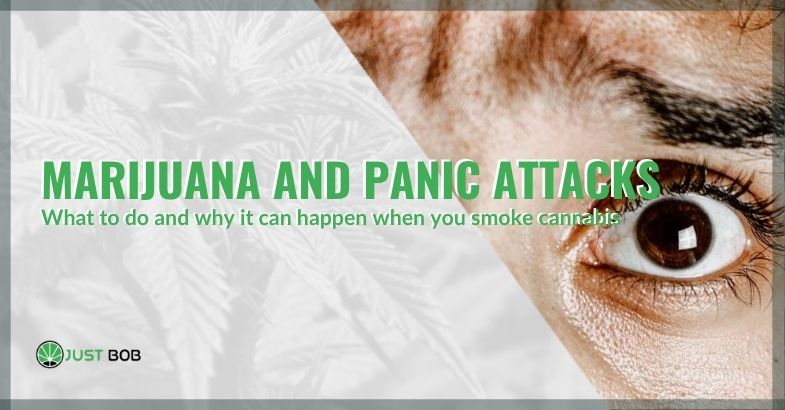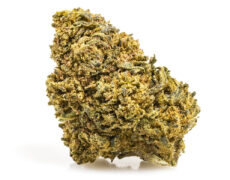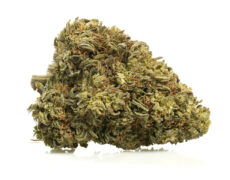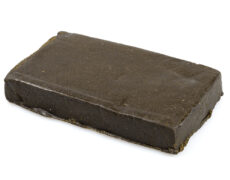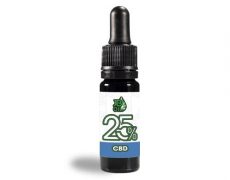Modified on: 23/10/2023
Does weed cause panic attacks? Yes, it can happen with high THC cannabis. Here’s why and how to behave
Among the most negative side effects of cannabis use, we indeed find panic attacks called PAs or PDs (from the English panic attacks or panic disorders). It is not “simple” anxiety after a joint, but episodes whose symptoms can be tachycardia, sudden sweating, tremor, choking, chest pain, nausea, fear of dying or going crazy and many more.
Suppose the association of marijuana and panic attacks is not new to you, perhaps because you have also tried this disorder. In that case, you will probably be anxious and want to understand how to behave and why it happens.
Today we will explain the correlation between cannabis/hashish and PAs, what to do when you have a crisis and how to prevent it from happening.
At the end of the study, you will have found the answer to all your questions!
The correlation between weed and panic attacks
Panic disorder involves the onset of real crises of fear or intense anxiety, which grows rapidly during the attack. They are not harmful or dangerous, but they are challenging and negative experiences for the people who suffer from them, so much so that it is often necessary to resort to psychotherapy.
Among the most common symptoms we find:
- Fast and irregular heartbeat
- Dry mouth
- Feeling of fainting
- Dizziness
- Cold sweats, associated with chills
- Fear of dying or going crazy
An attack can last from about 5 minutes to 30 minutes. It can be triggered both by a situation of high stress and by the intake of psychoactive substances such as cannabis.
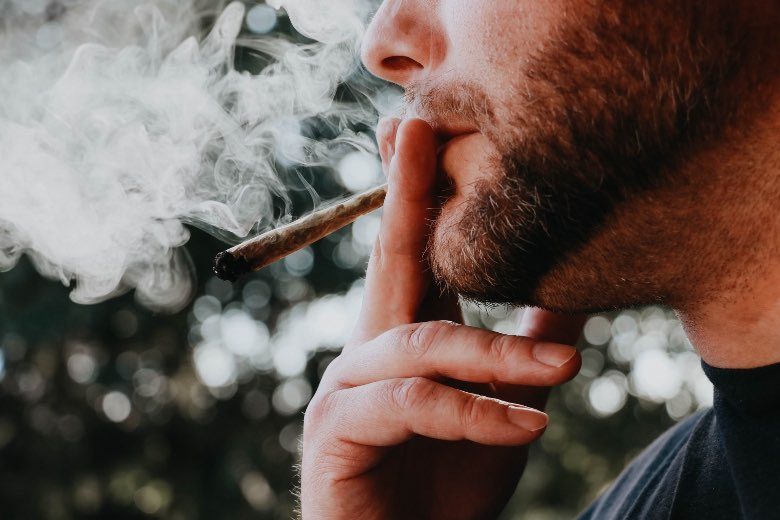

To understand why panic attacks can occur when smoking weed, we need to think about the effects of THC. Tetrahydrocannabinol is a substance capable of altering our psyche (in the short and long term), causing both positive and negative symptoms.
Among these symptoms, we find the copious increase in the flow of thoughts, anxiety, altered space-time perception and increased heart rate that can cause an escalation of anxiety to lead to panic crisis.
The CBD contained in large quantities in CBD cannabis is, on the other hand, anxiolytic. Therefore, it is in no way responsible for this side effect. On the contrary: it can appease it.
Usually, people who are already in an anxious or stressed state are more likely to experience a seizure after taking weed. So, if you wonder, “Why do I get anxious when I smoke? “, You probably have a predisposition to do so, or you are living a moment of your life that is not precisely peaceful?
But how to deal with panic attacks?
Read also: Natural herbs for anxiety: what are the best natural anxiolytics?
How to manage a panic attack that triggered my reeds?
During a crisis of this kind, the feeling that can sum up the general status is the intense agitation, perhaps accompanied by fear (precisely, panic).
Therefore, the solution to calm down is to practise slow breathing to lower the heart rate and gradually relax.


If you are indoors, go outside for air (preferably fresh) and start controlling your breathing. Inhale deeply, hold your breath for a few seconds and then exhale slowly, thinking or saying the phrase “I am relaxed”.
Take numerous inhalations and exhalations until you get to relax and thus overcome the panic attack.
If the episodes recur even when you don’t smoke cannabis, we strongly recommend that you see a psychotherapist. Meanwhile, here are some tips to avoid them.
Tips to avoid panic attacks caused by taking THC
The best strategy to prevent panic disorder is to avoid being in a triggering situation. For example, if you experience these episodes when you smoke weed in closed, crowded and hot places, try not to do it again on these occasions or, if you can’t avoid it, stay near the exit.
Another way to avoid attacks when you smoke marijuana is to reduce the amount of THC. With tetrahydrocannabinol responsible for these side effects, you could choose Cannabis Indica with balanced THC and CBD or, even better, a preference for CBD weed.
Legal marijuana consists of cannabis flowers at very low THC content (less than 0.2%), high percentages of CBD (some varieties even exceed 25%).
Cannabidiol is an active ingredient in hemp that does not produce psychotropic effects. On the contrary: it is an antipsychotic and anxiolytic, therefore considered ideal for combating anxiety.
Read also: Marijuana flowering stage: the importance of flowering in cannabis production
CBD and anxiety: here’s how to fight anxiety and panic disorder with cannabidiol
Numerous scientific researches have proven (for the moment, mainly on laboratory mice) how CBD intake can help fight anxiety by soothing the symptoms of this problem.
It seems that cannabidiol-based products — such as CBD oil and cannabis light — can help calm the symptoms of the following ailments:
- GAD, or generalized anxiety disorder
- PTSD, post-traumatic stress disorder
- SAD, the social anxiety disorder
- DAP, panic disorder
CBD appears to help reduce stress, slow heart rate and breathing rate, completely relaxing those who take it.
Further human studies are needed to confirm the anxiolytic efficacy of CBD. Still, it appears that this cannabinoid has a good chance of being considered as an active therapeutic ingredient for numerous problems and diseases!
In conclusion
If the THC present in classic marijuana can cause panic attacks, the cannabidiol in CBD flowers, CBD hash and CBD oil enormously helps to calm these symptoms, leading to relaxation.
The studies in this regard are still in progress (especially regarding the effects on humans) but those already published have given excellent results.
Would you like to buy the best CBD products online?
Visit Justbob, our CBD online shop, now! We are waiting for you!
Source :
Soares, VP, & Campos, AC (2017). Evidences for the Anti-panic Actions of Cannabidiol. Current Neuropharmacology, 15 (2), 291–299. https://doi.org/10.2174/1570159parmi14666160509123955 ; Dannon PN, Lowengrub K, Amiaz R, Grunhaus L, Kotler M. Comorbid cannabis use and panic disorder: short term and long term follow-up study. Hum Psychopharmacol. 2004 Mar; 19 (2): 97-101. DOI: 10.1002 / hup.560. PMID: 14994319.

